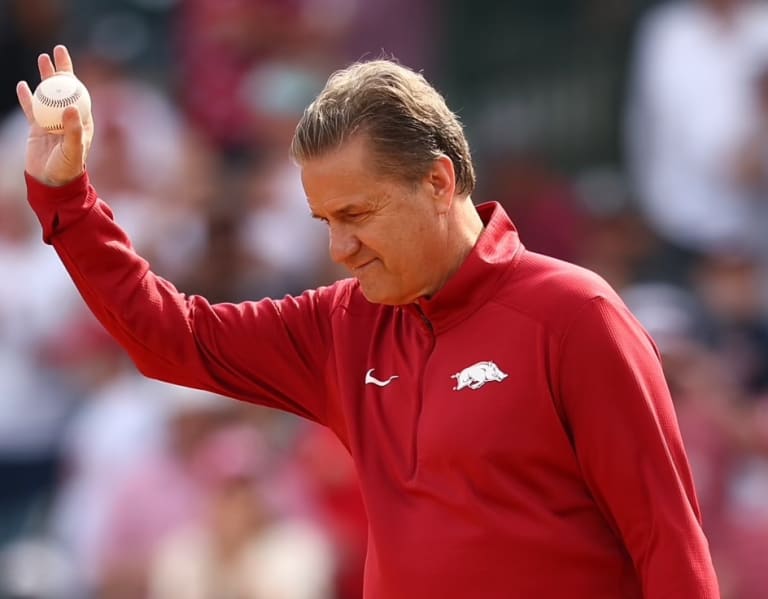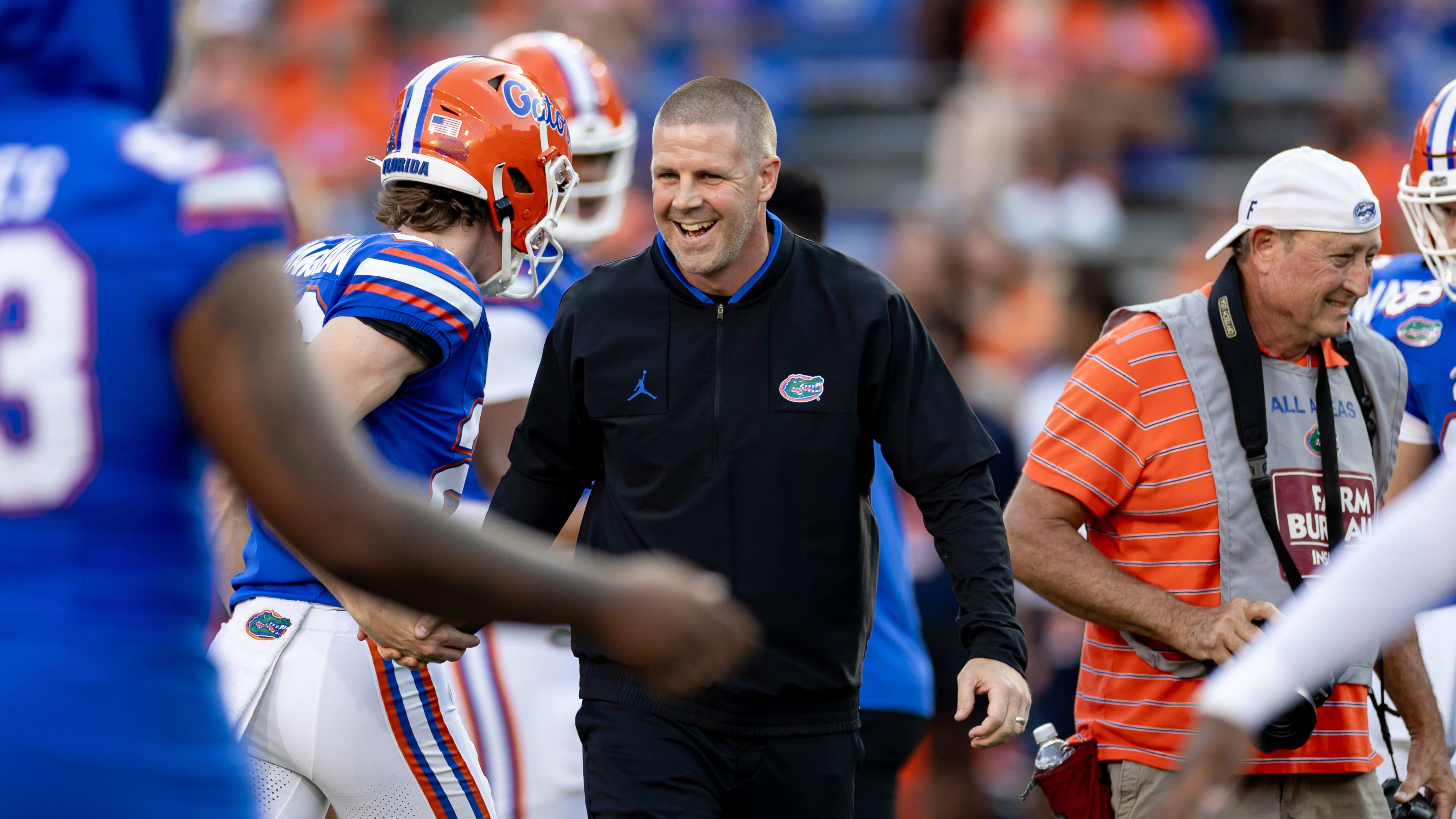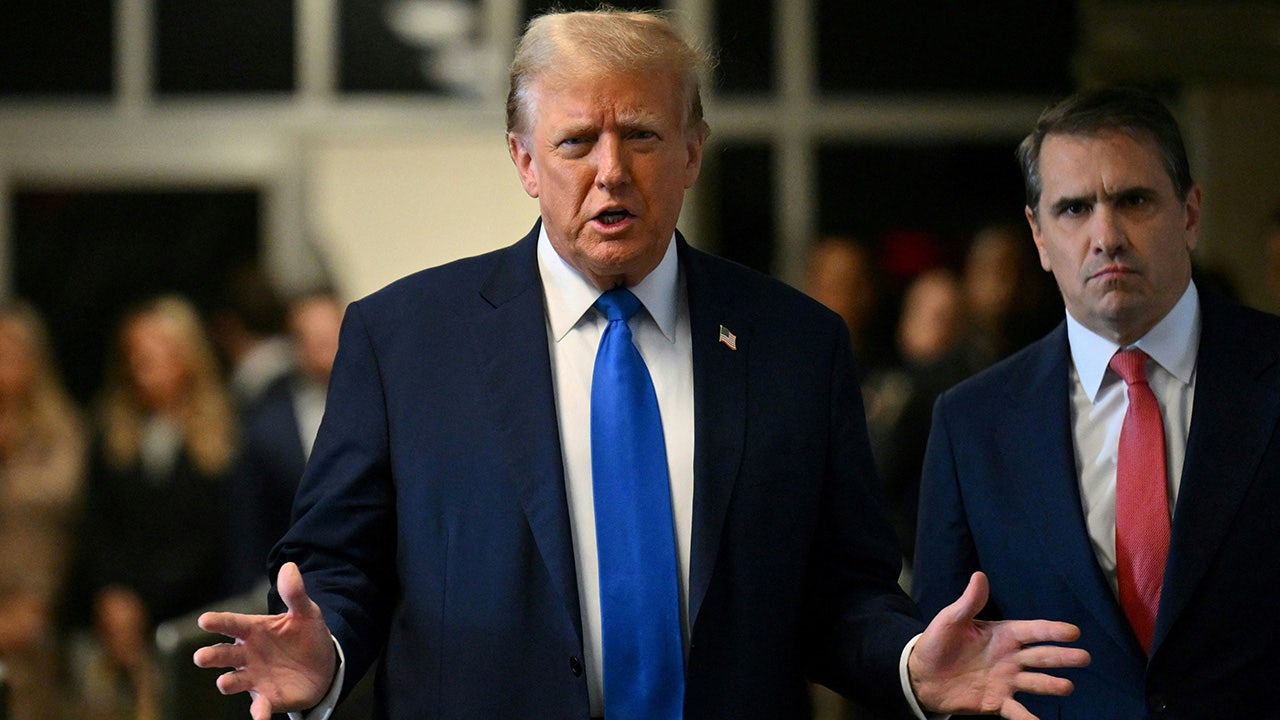Business
Retailers Get ‘Phygital’

The term has made its way into the nonprofit world, too. In a report this month, the World Economic Forum wrote that for developing countries, “the adoption of phygital solutions can foster inclusive development.”
Momentum Worldwide, a global marketing firm in New York that describes itself as an experiential agency, takes credit for coining “phygital” in 2007, but it didn’t really take off.
Karsten Moran for The New York Times

Business
A slice of tourists hasn't returned since COVID. L.A. wants them back.
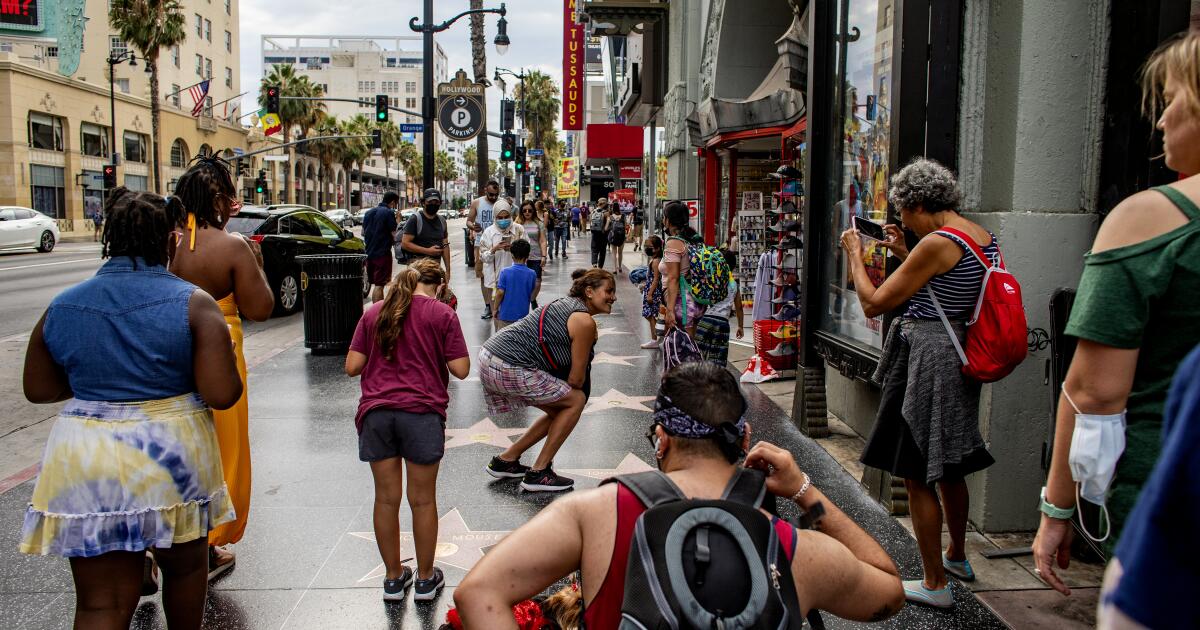
Before the pandemic, a steady stream of buses ferrying tourists from Brazil, China, Australia and elsewhere pulled into the Original Farmers Market every day. They typically idled for an hour or so, while their passengers ate and shopped for souvenirs at the historic collection of food stalls and kitschy shops in the heart of Los Angeles.
The buses still come these days. But, if the city’s overall tourism figures are any indication, the number of international travelers isn’t what it used to be.
Adam Burke is looking to fix that.
As president and chief executive of the Los Angeles Tourism & Convention Board, Burke has watched the city rebound after the dark days of COVID-19 to reassert itself as one of the country’s most popular travel destinations. The recovery, however, is incomplete as visits from international travelers remain well below pre-pandemic levels.
Boosting those visits, Burke says, is crucial to the overall strength of L.A.’s tourism industry, which brought in nearly $22 billion in 2022 and has more than 530,000 people working in tourism-related careers, according to city statistics. Foreign travelers tend to stay longer and spend more.
“It’s impossible to overstate how critically important international visitation is to L.A.,” Burke said, adding that the spending power of one international traveler is equal to three domestic visitors.
A pit stop at the farmers market is one of the many offerings that local officials, hotel executives and others from the L.A. tourism industry will be pitching to representatives from hundreds of international travel-related companies at an annual conference at L.A.’s convention center this week.
They’re hoping the conference provides an additional boost to the number of visits from abroad. While the volume of domestic visitors to L.A. has recovered to pre-pandemic levels, the 5.8 million international visitors L.A. received last year represents only about three-quarters of the total who came in 2019, according to figures from the tourism board.
The conference marks the starting point of a broader campaign by the tourism board, which has plans to use money from a federal grant to bolster marketing and branding targeting international travelers.
The push to regain foreign visitors in Los Angeles is reflected in national tourism statistics. Before the pandemic hit, the amount that visitors to the U.S. spent in the country outpaced the total American travelers spent abroad, giving the country a so-called travel trade surplus. Beginning in the summer of 2021, however, that balance has shifted as international travel to the U.S. has slipped, according to the U.S. International Trade Administration.
In California, as elsewhere, the slowdown in international tourism has been driven largely by the flagging number of visitors from China and other Asian countries, industry experts said.
Although the more than 75 million departures and arrivals at LAX in 2023 marked a nearly 14% jump in volume from the previous year, the total was still about 15% below the airport’s traffic in 2019, according to Dae Levine, a spokesperson for Los Angeles World Airports.
“The gap we are looking to make up is flights to and from China,” Levine said.
Chilly relations between the U.S. and China, as well as restrictions to Russian airspace that interfere with flight routes, have meant that the number of flights arriving from China has remained low despite the end of the lockdown.
A lunch crowd gathers at Phil’s Deli & Grill, inside the Original Farmers Market in Los Angeles, in 2022.
(Jay L. Clendenin / Los Angeles Times)
The number of flights has been climbing gradually over the past year. Since the end of March, U.S. transportation officials have allowed Chinese airlines to increase the number of round-trip flights into the country each week from 35 to 50, which is nearly a third of pre-pandemic levels.
Tourism officials in L.A. are encouraged by the upcoming conference, where China is expected to send one of the largest delegations .
The slow pace of processing visa applications has further dissuaded travelers, said Geoff Freeman, president of the U.S. Travel Assn. In India, would-be tourists typically must wait more than a year for an interview at the U.S. Embassy or a consulate that is a part of the visa application, and in Colombia the wait can stretch to nearly two years, he said.
“As you can imagine, if someone told you there was a 700-day wait, you would say, ‘I’m going to go somewhere else,’” Freeman said.
Burke, who serves as a member of the U.S. Department of Commerce’s Travel and Tourism Advisory Board, is among those pushing the White House to ease travel restrictions, address visa backlogs and boost flight volumes.
In some ways, L.A. as a tourist destination is a difficult sell, said Jan Brueckner, an economics professor at UC Irvine.
“L.A. is not such a great city for getting around,” Brueckner said. “In L.A., to get around you really need a rental car and that’s a factor that makes things more expensive, and people may encounter our famous traffic congestion, which is not pleasant.”
And while major events scheduled to be held in L.A. in the next few years — including the World Cup in 2026 and the Summer Olympics in 2028 — will draw huge numbers of visitors from abroad, they are not without their complications and risks.
For example, efforts to resolve long-running labor disputes at dozens of L.A.-area hotels have made progress in recent months, but new contracts signed by workers are set to expire in early 2028, leaving open the possibility of labor unrest at hotels just before the Olympics.
Old hands in the tourism trade are used to that kind of uncertainty.
“You have to be prepared for anything. We could have earthquakes, riots and unrest,” said Scott Bennett, owner of Bennett’s Ice Cream, a mainstay at the Farmers Market for more than 60 years.
He recalled how during the COVID-19 lockdowns, tables and chairs were removed from the market’s patio and he had to let the shop’s 12 employees go. Instead of serving cones to customers, the store survived by Bennett selling hand-scooped pints for takeout.
Now, staffing is back, as are sales, said Bennett, who is looking forward to a hot summer. “When it’s hot, people want ice cream.”
Burke from the tourism board, meanwhile, is hoping Bennett will hear a few more foreign languages being spoken among customers waiting in line.
“They are the golden goose of the industry,” he said of foreign tourists.
Business
Fast food operators rushing to use AI in the wake of minimum wage hikes

It didn’t take long for Harshraj Ghai to respond to the impact of California’s new $20 an hour minimum wage for his 3,700 fast-food employees.
Ghai and his family operate 180 Burger Kings, Taco Bells and Popeyes chicken restaurants across the state, and one of the first things they did after the law took effect April 1 was to start capping workers’ hours to avoid overtime pay. Also, they’re closing some outlets a little earlier, and opening others a bit later to avoid paying workers for less profitable periods.
But the biggest thing Ghai and his family are doing does not directly involve workers at all: They’ve speeded up and expanded their use of technology, especially AI.
Right now, they’ve moved up by several years their plans to install self-service kiosks at all of their locations, including 25 out of state.
But what has Ghai most hopeful about offsetting the higher labor costs is to have AI handle customers’ orders made at the drive-through. He’s testing the machine-learning system this month at a few locations and hopes to roll it out company-wide by this time next year.
Drive-throughs of course are quintessentially California, with its car culture and fast lifestyle. And now, with AI coming on to the scene in a big way, the state is emerging as ground zero for what many analysts see as the next big thing in the world of fast food and drinks.
Not that AI-led drive-through is quite ready for prime time. As it is today, the system can have trouble with people’s accents and ambient noise, making it hard to recognize speech and translate it into text. Pilot programs run by McDonald’s and others thus far often have backed up the AI technology with an employee, like the Wizard of Oz man behind the curtain. The unseen worker from as far away as the Philippines monitors and sometimes intervenes to complete an order if AI falters.
Even so, Ghai thinks that once the kinks are worked out, it’ll be a godsend for fast-food operators like him.
“It has the potential of being the most impactful,” says Ghai, 39, whose Indian immigrant father, Sunny, started the family business in 1998 by buying a failing Burger King in San Jose, where he was an assistant manager.
What pushed the envelope for businesses like the Ghais’ was California’s sudden 25% hike in the minimum wage for the fast-food industry’s half-million or so workers in the state.
To deal with the big increase in labor costs — which average about one-third of a fast-food store’s sales — many of the affected business owners immediately jacked up menu prices.
Ghai said he’s raised prices overall this year by just 2%. But that’s not been the norm. By the middle of last month, at many franchises across the state — from Jack in the Box to Chipotle to Starbucks — consumers on average were paying a mid- to high-single-digit percentage more than just a month or two earlier, according to a survey by BTIG, the investment banking and research firm.
Relatively few appear to have resorted to layoffs, in part because many were already staffed at bare-bones levels. So to hold the line on further price increases, a growing number of fast-food operators are now racing to install as much automation as they can afford.
Perhaps the most visible and soon to be widely adopted are all kinds of kiosks for ordering food. The self-service machines have been around for more than a decade, but franchise owners such as Michaela Mendelsohn resisted the move for many years.
“We just didn’t want to force our customers to use technology. We thought the personal contact was important,” said Mendelsohn, who has six El Pollo Loco restaurants in Los Angeles and Ventura counties.
But when the industry’s basic pay rose to $20 an hour, she said, that amounted to $180,000 in additional labor costs a year per store. Within a month of the wage hike, Mendelsohn bought two standing kiosks for each of her six restaurants. That set her back $25,000 per store, for two screens, installation, software and other related costs. One of the two machines accepts cash, which she said was needed for her blue-collar customers.
An L.A. Carl’s Jr. restaurant. In California, CKE Restaurants, the owner and franchisor of Carl’s Jr. and Hardee’s, appears to be ahead of the pack on the use of AI technology.
(Los Angeles Times)
Mendelsohn figures that the kiosks might save five hours of labor a day. By that estimate, the machines would pay for themselves within a year and shave about 20% of the increased cost from the latest minimum wage increase. “We’re chipping away at it,” she said.
Self-service kiosks are ubiquitous in Western Europe, but they’re in fewer than 20% of fast-food establishments in the U.S., says Perse Faily, chief executive at Los Angeles-based Tillster, one of earliest providers of kiosks and other digital platforms for restaurants.
The COVID-19 pandemic pushed the trend in the U.S., she said, and now in California, “We’re seeing this complete sea change in thinking, ‘How do I address my labor costs?’”
Kiosks may be appealing in that they can not only save on labor, but also drive higher sales. Unlike people, the programmed machines are always trying to “upsell,” never forgetting to ask customers whether they want a drink with their meal or something else to go along with their entree.
Faily, Tillster’s CEO since late 2007, wouldn’t disclose the company’s sales increase, but said its new customers include Burger King and Popeyes, and that employment at the firm is up 75 from a year ago, to 340 currently. “The minimum wage increase has completely changed the landscape,” she said.
Other computer-guided upgrades are also aimed at cutting labor costs, from automatic avocado peelers and dishwashers to robotic arms that flip burgers and turn over fryer baskets.
But return on investments, while helpful for the bottom line, don’t do enough to offset burgeoning payroll expenses. So relatively few fast-food operators, for now, are making major investments in robotics and similar mechanical devices.
AI, on the other hand, looks like it could be a game-changer.
The pandemic boosted drive-through traffic at fast-food places to about 80% of sales from two-thirds pre-COVID, said Peter Selah, a restaurant industry analyst at BTIG. And AI order-taking opens the possibility of speeding up the drive-through process, increasing sales and reducing significant labor overhead.
But analysts say it’s likely to be at least a year or two, maybe longer, before AI-led drive-through reaches a consistent and high enough level of accuracy where companies are comfortable with it. Tests have often left frustrated customers demanding to talk to a live person rather than a bot, according to various accounts.
Major fast-food brands were reluctant to discuss their AI drive-through efforts. Nationally, McDonald’s has been out in front, using an IBM-developed system. A spokesperson would only say that McDonald’s “continues to gather learnings from the roughly 100 pilot restaurants testing automated order taking technology in the U.S. We expect to share more later this year.”
In California, CKE Restaurants, the owner and franchisor of Carl’s Jr. and Hardee’s, appears to be ahead of the pack on the technology, but like other chains, including Taco Bell, Burger King and El Pollo Loco, CKE declined to comment.
Analysts, however, say none of the AI platforms have reached more than 85% success in which human intervention isn’t needed.
“The hardest part is when you have people with accents, from different states and immigrants. It’s challenging,” said Danilo Gargiulo, senior analyst covering restaurants for Bernstein, an investment and research firm.
Still, Gargiulo sees the day when AI will speed up the drive-through line, boosting sales and consumer satisfaction. “Right now the drive-through time is slowed by repeated orders,” he said. With accurate AI speech recognition and faster, clearer communication to the kitchen staff, he said, you can cut as much as 90 seconds off what typically takes 5½ minutes for a customer to complete a drive-through purchase.
That’s what Ghai is betting on.
He says his initial investment for the AI drive-through technology, purchased from San Carlos-based Presto, is about $10,000 per store. Ghai estimates that if he can get it to perform at 90%, a store employee might have to step in to take over an order just three times every hour, freeing up the worker to do other tasks.
The AI system is getting better as it gathers more data, he said, and it’ll soon be able to communicate in Spanish. Add in mobile apps and loyalty programs, and AI has the potential to give fast-food customers a faster and more personalized service. And of course there’s the labor saving part: Ghai thinks the AI drive-through could reduce 10 to 15 hours of wages a day, and double that where he has two human order takers.
“Our goal isn’t to get rid of people. We’re in the people business at the end of the day,” he said. At the same time, Ghai added, over the long haul, “we’ll have fewer people.”
Business
Video: ‘Lack of Further Progress’ on Inflation Keeps Interest Rates High

new video loaded: ‘Lack of Further Progress’ on Inflation Keeps Interest Rates High
transcript
transcript
‘Lack of Further Progress’ on Inflation Keeps Interest Rates High
Jerome H. Powell, the Fed chair, said that the central bank needed “greater confidence” that inflation was coming down before it decided to cut interest rates, which are at a two-decade high.
-
Today, the F.O.M.C. decided to leave our policy interest rate unchanged and to continue to reduce our securities holdings, though, at a slower pace. Our restrictive stance of monetary policy has been putting downward pressure on economic activity and inflation, and the risks to achieving our employment and inflation goals have moved toward better balance over the past year. However, in recent months, inflation has shown a lack of further progress toward our 2 percent objective, and we remain highly attentive to inflation risks. We’ve stated that we do not expect that it will be appropriate to reduce the target range for the federal funds rate until we have gained greater confidence that inflation is moving sustainably toward 2 percent. So far this year, the data have not given us that greater confidence. In particular, and as I noted earlier, readings on inflation have come in above expectations. It is likely that gaining such greater confidence will take longer than previously expected.
Recent episodes in Business
-

 News1 week ago
News1 week agoLarry Webb’s deathbed confession solves 2000 cold case murder of Susan and Natasha Carter, 10, whose remains were found hours after he died
-

 Education1 week ago
Education1 week agoVideo: Dozens of Yale Students Arrested as Campus Protests Spread
-

 World1 week ago
World1 week agoHaiti Prime Minister Ariel Henry resigns, transitional council takes power
-

 News1 week ago
News1 week agoFirst cargo ship passes through new channel since Baltimore bridge collapse
-

 World1 week ago
World1 week agoUS secretly sent long-range ATACMS weapons to Ukraine
-

 World1 week ago
World1 week agoSpanish PM Pedro Sanchez suspends public duties to 'reflect'
-

 News1 week ago
News1 week agoAmerican Airlines passenger alleges discrimination over use of first-class restroom
-
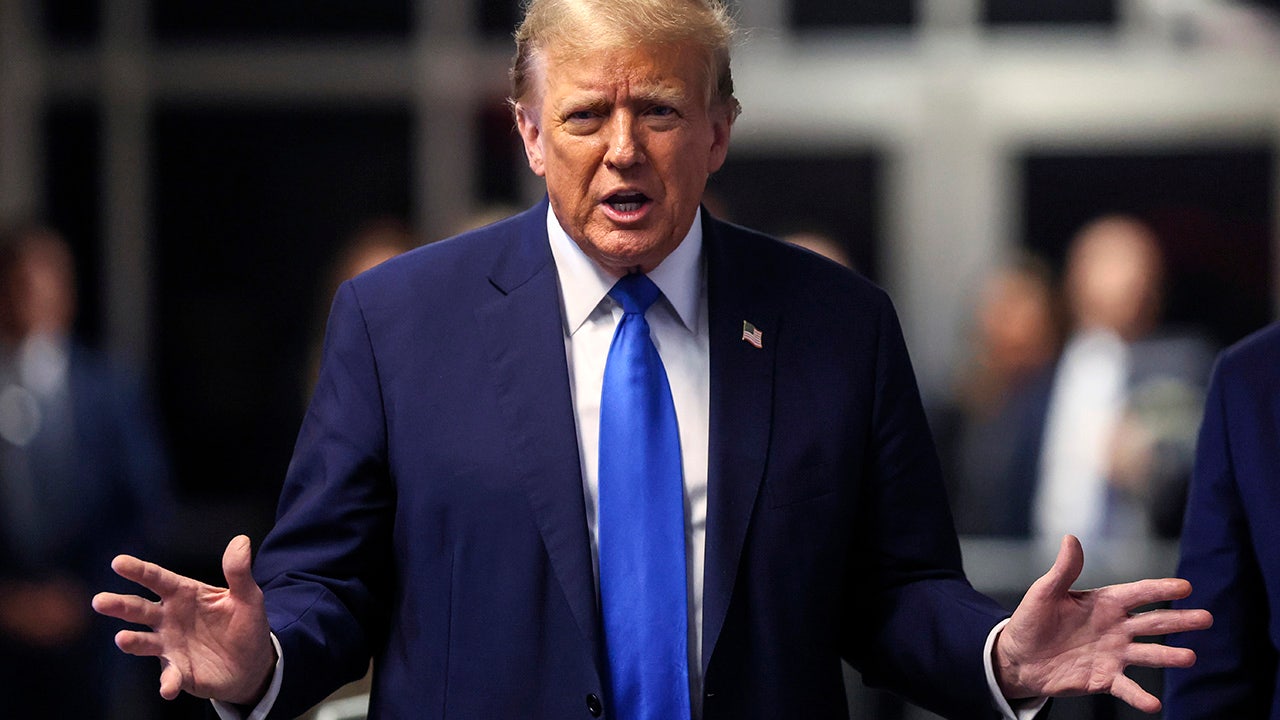
 Politics1 week ago
Politics1 week agoTrump rails against Manhattan DA Bragg, says 'numerous other agencies' didn't push case
